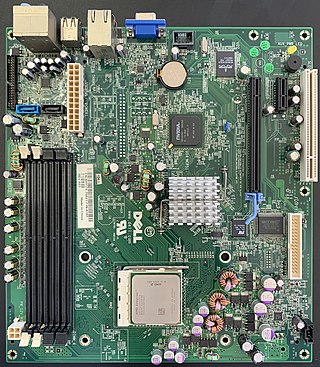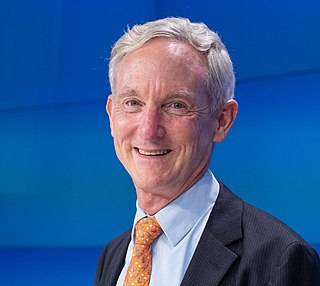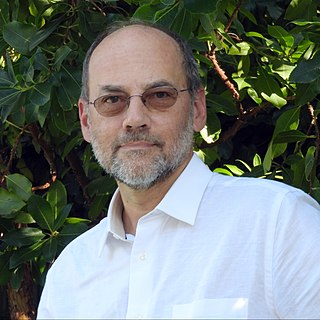Related Research Articles

Computer engineering is a branch of electronic engineering and computer science that integrates several fields of computer science and electronic engineering required to develop computer hardware and software. Computer engineers require training in electronic engineering, computer science, hardware-software integration, software design, and software engineering. It uses the techniques and principles of electrical engineering and computer science, and can encompass areas such as artificial intelligence (AI), robotics, computer networks, computer architecture and operating systems. Computer engineers are involved in many hardware and software aspects of computing, from the design of individual microcontrollers, microprocessors, personal computers, and supercomputers, to circuit design. This field of engineering not only focuses on how computer systems themselves work, but also on how to integrate them into the larger picture. Robotics are one of the applications of computer engineering.

A mixed-signal integrated circuit is any integrated circuit that has both analog circuits and digital circuits on a single semiconductor die. Their usage has grown dramatically with the increased use of cell phones, telecommunications, portable electronics, and automobiles with electronics and digital sensors.

Frank Thomson "Tom" Leighton is the CEO of Akamai Technologies, the company he co-founded with the late Daniel Lewin in 1998. As one of the world's preeminent authorities on algorithms for network applications and cybersecurity, Dr. Leighton discovered a solution to free up web congestion using applied mathematics and distributed computing.
James F. Blinn is an American computer scientist who first became widely known for his work as a computer graphics expert at NASA's Jet Propulsion Laboratory (JPL), particularly his work on the pre-encounter animations for the Voyager project, his work on the 1980 Carl Sagan documentary series Cosmos, and the research of the Blinn–Phong shading model.
Arun N. Netravali is an Indian–American computer engineer credited with contributions in digital technology including HDTV. He conducted research in digital compression, signal processing and other fields. Netravali was the ninth President of Bell Laboratories and has served as Lucent's Chief Technology Officer and Chief Network Architect. He received his undergraduate degree from IIT Bombay, India, and an M.S. and a Ph.D. from Rice University in Houston, Texas, all in electrical engineering. Several global universities, including the Ecole Polytechnique Federale in Lausanne, Switzerland, have honored him with honorary doctorates.

Asad Ali Abidi is a Pakistani-American electrical engineer. He serves as a tenured professor at University of California, Los Angeles, and is the inaugural holder of the Abdus Salam Chair at the Lahore University of Management Sciences (LUMS). He is best known for pioneering RF CMOS technology during the late 1980s to early 1990s. As of 2008, the radio transceivers in all wireless networking devices and modern mobile phones are mass-produced as RF CMOS devices.

S. Shankar Sastry is the Founding Chancellor of the Plaksha University, Mohali and a former Dean of Engineering at University of California, Berkeley.
Sung-Mo “Steve” Kang is an American electrical engineering scientist, professor, writer, inventor, entrepreneur and 15th president of KAIST. Kang was appointed as the second chancellor of the University of California, Merced in 2007. He was the first department head of foreign origin at the electrical and computer engineering department at the University of Illinois at Urbana-Champaign. Kang teaches and has written extensively in the field of computer-aided design for electronic circuits and systems; he is recognized and respected worldwide for his outstanding research contributions. Kang has led the development of the world’s first 32-bit microprocessor chips as a technical supervisor at AT&T Bell Laboratories and designed satellite-based private communication networks as a member of technical staff. Kang holds 15 U.S. patents and has won numerous awards for his ground breaking achievements in the field of electrical engineering.
Nikil Dutt is a Chancellor's Professor of Computer Science at University of California, Irvine, United States. Professor Dutt's research interests are in embedded systems, electronic design automation, computer architecture, optimizing compilers, system specification techniques, distributed systems, and formal methods.

Danny Cohen was an Israeli American computer scientist specializing in computer networking. He was involved in the ARPAnet project and helped develop various fundamental applications for the Internet. He was one of the key figures behind the separation of TCP and IP ; this allowed the later creation of UDP.
Robert W. Brodersen is a professor of electrical engineering, now emeritus, and a founder of the Berkeley Wireless Research Center (BWRC) at the University of California, Berkeley.
David Albert Hodges (1937–2022) was an American electrical engineer, digital telephony pioneer, and professor of electrical engineering at the University of California, Berkeley.

Electronic engineering is a sub-discipline of electrical engineering which emerged in the early 20th century and is distinguished by the additional use of active components such as semiconductor devices to amplify and control electric current flow. Previously electrical engineering only used passive devices such as mechanical switches, resistors, inductors, and capacitors.
Teresa Huai-Ying Meng is a Taiwanese-American academician and entrepreneur. She is the Reid Weaver Dennis Professor of Electrical Engineering, Emerita, at Stanford University, and founder of Atheros Communications, a wireless semiconductor company acquired by Qualcomm, Inc.

Eby G. Friedman is an electrical engineer, and Distinguished Professor of Electrical and Computer Engineering at the University of Rochester. Friedman is also a visiting professor at the Technion - Israel Institute of Technology. He is a Senior Fulbright Fellow and a Fellow of the IEEE.
Vishwani D. Agrawal is the James J. Danaher Professor of Electrical and Computer Engineering at Auburn University. He has over four decades of industry and university experience, including working at Bell Labs, Murray Hill, NJ, Rutgers University, TRW and IIT, Delhi. He is well known as a cofounder and long-term mentor of the International Conference on VLSI Design held annually in India since 1985.

Edward Ashford Lee is an American computer scientist, electrical engineer, and author. He is Professor of the Graduate School and Robert S. Pepper Distinguished Professor Emeritus in the Electrical Engineering and Computer Science (EECS) Department at UC Berkeley. Lee works in the areas of cyber-physical systems, embedded systems, and the semantics of programming languages. He is particularly known for his advocacy of deterministic models for the engineering of cyber-physical systems.
RF CMOS is a metal–oxide–semiconductor (MOS) integrated circuit (IC) technology that integrates radio-frequency (RF), analog and digital electronics on a mixed-signal CMOS RF circuit chip. It is widely used in modern wireless telecommunications, such as cellular networks, Bluetooth, Wi-Fi, GPS receivers, broadcasting, vehicular communication systems, and the radio transceivers in all modern mobile phones and wireless networking devices. RF CMOS technology was pioneered by Pakistani engineer Asad Ali Abidi at UCLA during the late 1980s to early 1990s, and helped bring about the wireless revolution with the introduction of digital signal processing in wireless communications. The development and design of RF CMOS devices was enabled by van der Ziel's FET RF noise model, which was published in the early 1960s and remained largely forgotten until the 1990s.
References
- ↑ "David G Messerschmitt Homepage". www.eecs.berkeley.edu. Retrieved 4 October 2014.
- ↑ "IEEE Fellows 1983 | IEEE Communications Society".
- ↑ "IEEE Alexander Graham Bell Medal Recipient List" (PDF). www.ieee.org. Archived from the original (PDF) on 30 November 2016. Retrieved 5 September 2017.